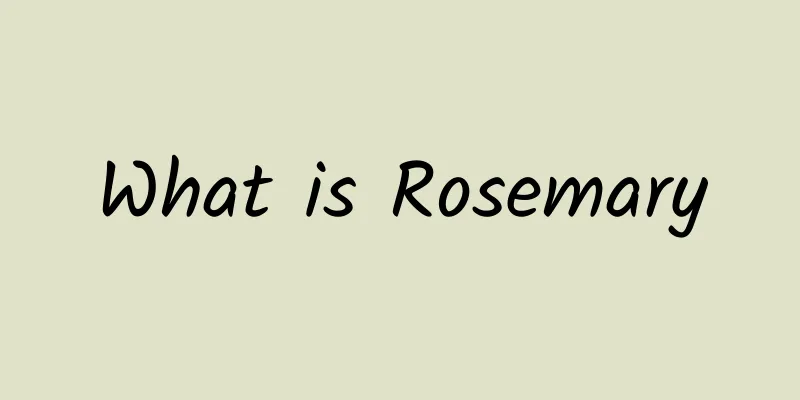What are the effects and functions of Ophiopogon japonicus

|
If we choose traditional Chinese medicine to treat diseases in our lives, we need to use traditional Chinese medicine. Among them, Ophiopogon japonicus is a kind of traditional Chinese medicine, and it is also a frequently used traditional Chinese medicine. It has certain effects on the treatment of various diseases. Although many friends will choose traditional Chinese medicine treatment methods, they know nothing about the efficacy of traditional Chinese medicine. So what are the effects and functions of Ophiopogon japonicus? [Other name] Ophiopogon japonicus (Pharmaceutical Chemistry) [Source] It is the tuberous root of the Liliaceae plant Ophiopogon japonicus. Most of the products are cultivated. In Zhejiang, it is harvested at the beginning of summer in the third year after cultivation, and is called "Hangzhou Ophiopogon"; in Sichuan, it is harvested after Qingming Festival in the second year of cultivation, and is called "Sichuan Ophiopogon". Wild Ophiopogon japonicus is usually dug after the Qingming Festival and is commonly known as "wild Ophiopogon japonicus". After digging up Ophiopogon japonicus, cut off the tubers, wash off the soil, expose them to the sun for 3 to 4 days, pile them in a ventilated place to allow moisture to evaporate. After about 3 days, spread them out and expose them to the sun again. Repeat this 2 to 3 times. After drying, remove all impurities from the roots. [Original form] Grass along the steps (Jiangxi Tongzhi), also known as: sheep leek, horse leek, sheep shepherd's purse, love leek, Yu leek, Renling, immortal medicine, Pulei, Suizhi (Wu Pu Materia Medica), sheep leek, Yu Jia (Bielu), grass in front of the steps (Compendium of Materia Medica), book belt grass, Xiudun grass (Qunfangpu), horse dung grass, home edge grass, leek leaf Ophiopogon japonicus. [Habitat distribution] Growing on the banks of streams or under woods on hillsides. It is distributed or cultivated in most parts of the country. Mainly produced in Zhejiang and Sichuan. In addition, it is also produced in Jiangsu, Guizhou, Yunnan, Guangxi, Anhui, Hubei, Hunan and other places, but most of them are wild and few are cultivated. 【Properties】 ① Ophiopogon japonicus [Chemical composition] The root tubers of Oleander contain a variety of steroidal saponins, the aglycone of which is roscosapogenin; it also contains β-sitosterol, stigmasterol, and β-sitosterol-β-D-glucoside. The fruit contains kaempferol glycoside, which is kaempferol-3-glucogalactoside. 【Pharmacological action】 ①Effect on blood sugar [Processing] Ophiopogon japonicus: Pick out impurities, soak in water, take out, soak thoroughly, remove the core, then wash and dry. Red Ophiopogon japonicus: Remove the core of Ophiopogon japonicus, place it in a pot and spray a little water to moisten it, add cinnabar powder, sprinkle it evenly, and turn it over from time to time until the outside of the Ophiopogon japonicus is evenly covered with cinnabar, then take it out and let it dry. (For every 10 jin of Radix Ophiopogonis, use 3 liang of cinnabar) 【Nature and flavor】Sweet, slightly bitter, cold. [return through meridians] enters the lung, stomach and heart meridians. [Functions and indications] Nourishes yin and moistens the lungs, clears the heart and relieves restlessness, benefits the stomach and produces body fluids. It is used to treat dry cough due to lung dryness, vomiting blood, hemoptysis, pulmonary tuberculosis, lung abscess, fatigue, restlessness, thirst, loss of body fluid due to febrile disease, dry throat and mouth, and constipation. [Usage and Dosage] For oral use: decocted in water, 2 to 4 qian; or made into pills or powder. [Note] Those who suffer from spleen and stomach deficiency, diarrhea, phlegm and dampness in the stomach, or cough caused by sudden cold should not take this medicine. [Additional prescription] ① Treat dryness damaging the yin of the lung and stomach, or fever or cough: 3 qian of Adenophora Root, 3 qian of Ophiopogon japonicus, 2 qian of Polygonatum odoratum, 1 qian of raw licorice, 1.5 qian of winter mulberry leaves, 1.5 qian of Phaseolus Bean, and 1.5 qian of Pollen. Boil five cups of water and take out two cups, take it twice a day. (Adenophora and Ophiopogon Decoction from Treatise on Febrile Diseases) [Note] In addition, the Ophiopogon japonicus used in Tibet is the tuberous root of the Liliaceae plant Ophiopogon japonicus. 【Excerpt】《*Dictionary》 [Source] From "Shennong's Herbal Classic". The above is an introduction to the effects and functions of Ophiopogon japonicus. Before taking Chinese medicine, it is best to understand some of the effects and functions of Chinese medicine. In fact, the effects of Chinese medicine such as Ophiopogon japonicus are very great. Appropriate use of this type of medicine can help us achieve the effect of health preservation without causing any harm to our body. |
<<: What are the effects and functions of Eclipta prostrata
>>: What are the effects and functions of maca?
Recommend
How to "eat" poisonous mushrooms in the name of science? Psychedelic mushrooms: Thanks for the invitation
"Red umbrella, white pole, let's lie dow...
The efficacy and function of Schefflera leaves
Schefflera leaves are a medicinal material that c...
Dosage, efficacy and function of wolfberry soaked in water
Wolfberry is one of the most common tonics in our...
The efficacy and function of wild magnolia flower
Diseases require improvement through medicine. Di...
After being bitten by a snake, a woman imitated a TV show and used her mouth to suck out the poison, but the result was…
After being bitten by a snake, use your mouth to ...
HD, UHD, 4K, 8K... How do you differentiate between these resolutions?
In today's digital age, video has become an i...
The efficacy and function of chandelier flowers
Traditional Chinese medicine is a Chinese traditi...
The black box has been found! All aircraft are required to install it. What important information can it provide?
The crash of China Eastern Airlines flight MU5735...
The efficacy and function of Fritillaria thunbergii
Fritillaria thunbergii, also known as earth betel...
Stones that look like leeches after heating may sound scary, but they are actually a great help in building construction →
Yu Feng Recently, the State Council issued the &q...
The efficacy and function of Dan Bu Lao
There are so many medicinal herbs in the world, a...
Will there be no mosquitoes if you live in a high-rise building? Mosquito: How high can you guess I can fly?
"If you live high enough, there will be no m...
The efficacy and function of safflower seeds
Everyone is familiar with safflower seeds, of cou...
Why do some people get red spots while others get big blisters after being bitten by mosquitoes?
Audit expert: Zhang Yuhong Chief Physician of Der...









